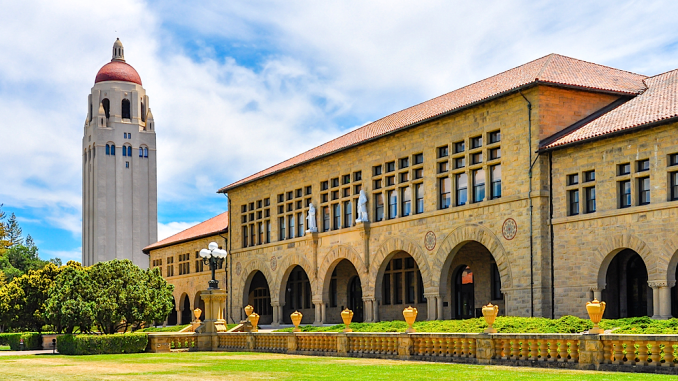
BY BRADEN CARTWRIGHT
Daily Post Staff Writer
The Santa Clara County Sheriff’s Office and the Stanford Department of Public Safety are working on a new agreement that governs how police officers operate at the university.
Supervisor Joe Simitian said he wants the agreement to be crystal clear about how the public can learn about crime at Stanford.
“There is an inherent tension between the desire of the university to maintain a good reputation — not just in the immediate community but on a national and an international basis — and the obligation to provide fulsome reporting of public safety data on the campus,” Simitian said at a meeting Oct. 22.
Stanford is one of two private universities in California with its own police force, along with the University of Pacific in Stockton.
Stanford gets its police powers from a 17-page agreement signed with former Sheriff Laurie Smith in 2007.
New Sheriff Bob Jonsen has been working with Stanford to update the agreement since October 2023, and Stanford’s lawyers were sent the latest draft for review on Aug. 1.
A discussion the Board of Supervisors planned to have on the agreement Oct. 22 was delayed three times this year, leaving Simitian to wonder if he’ll be on the board when the agreement is voted on. Simitian is leaving the board at the end of the year due to term limits and will be replaced by Margaret Abe-Koga, a Mountain View council member.
“It wasn’t that we did not want to bring this item to the board,” Assistant Sheriff Dalia Rodriguez told Simitian. “We just wanted to make sure that we were really very thoughtful as far as the process, and have a clear understanding what the responsibilities are.”
Simitian said he wants the other four supervisors to help Abe-Koga if he can’t weigh in by the end of the year.
“These issues are likely to be almost wholly new to her,” Simitian said.
Simitian stressed the importance of the agreement, which gives Stanford police the power to detain, search, arrest and use deadly force like any other department.
“This is not a small thing, when a government agency conveys its police power authority to a private entity,” he said.
Stanford’s reporting on crime data is a matter of accountability and public safety, Simitian said.
He compared the situation to the movie “Jaws,” when the small-town mayor tells the police chief not to scare everyone by telling them what’s happening because it would scare away tourists.
Supervisor Cindy Chavez said she’s heard complaints from students who were sexually assaulted and didn’t feel like Stanford did a robust investigation.
Simitian said he’s heard concerns about how Stanford officers have confronted students of color.
He asked who Stanford officers are accountable to — the public or their employer?
“That’s a hard question to answer. It’s a tension that is built into any discussion,” he said.
The arrangement goes back to 1985, when the city of Palo Alto, Stanford and Santa Clara County signed a tri-party agreement about land use. Stanford was allowed to remain unincorporated, keeping greater control over its destiny, as long as Stanford paid for and provided city services on campus. Stanford’s big tax generators — the Stanford Shopping Center and the Stanford Research Park — were included within the city’s limits.
Stanford has 21 police officers and 50 employees who support them, led by Chief Laura Wilson. A single sheriff’s captain is assigned to the campus to make sure Stanford is following the sheriff’s rules.
Simitian said he would be interested in assigning a second captain, but Stanford might not be willing to pay for the position.
Nobody from Stanford spoke at the Oct. 22 meeting.
The board asked police auditor Mike Gennaco to weigh in on what should be included in the new agreement.
Gennaco made eight recommendations:
• A Stanford captain should attend regular meetings of sheriff’s captains.
• The sheriff and the Stanford chief should meet every other month or every quarter, at a minimum.
• The sheriff’s captain assigned to Stanford should have well-defined duties, responsibilities and experience.
• The sheriff’s captain should have an application process based on the special criteria for campus public safety.
• The Stanford chief shouldn’t evaluate the sheriff’s captain assigned to Stanford. Instead, the chief should provide input.
• Stanford and the sheriff should have a way for updating Stanford’s policies while maintaining consistency with the sheriff’s policies.
• Stanford’s records keepers should get “a greater level of appropriate access” to confidential information.
• Stanford and the sheriff’s office should develop a different approach to records management.
“It remains uncertain whether Stanford will raise any legal objections to parts of the agreement that implements (Gennaco’s) recommendations,” Jonsen said in a report for supervisors.

Let’s be clear: it’s not Stanford DPS that withholds information, it’s the university itself. In the past, there was tension between Chief Wilson and Sheriff Smith, which was well-known within the Stanford PD. It became a bit of an inside joke that the SCCSO Captains sent to serve as “Liaisons” at SUDPS were often the ones who had fallen out of favor with Sheriff Smith. It took a significant amount of time — and some might say a small miracle — for the university to finally relocate SUDPS to a new building. Stanford insists on having a public safety force, but at the same time, they keep them under constant scrutiny, all while begrudging their presence as a separate entity. We’ll see how well Chief Smith and Sheriff Jonsen are able to work together now that this is being made fully public.